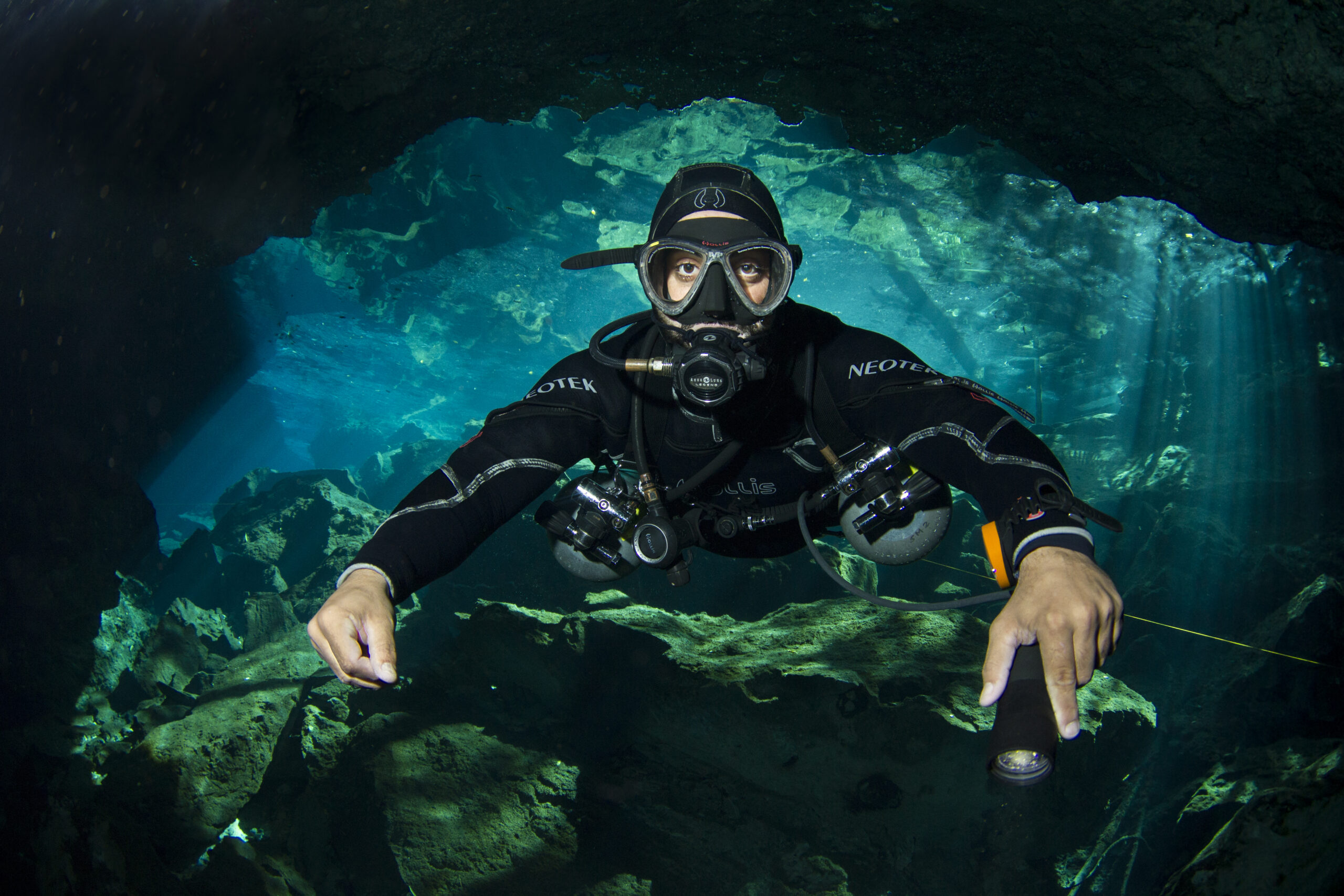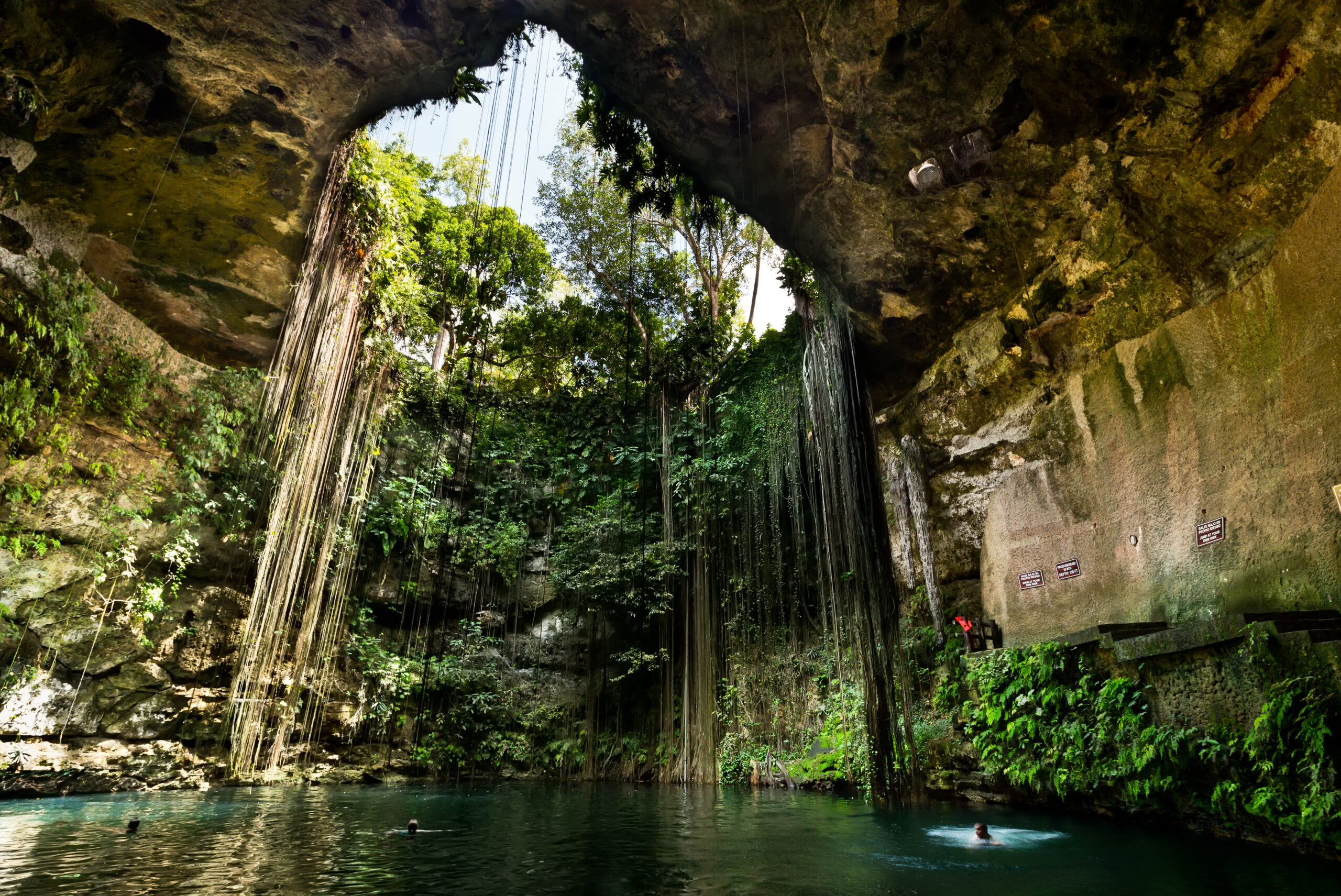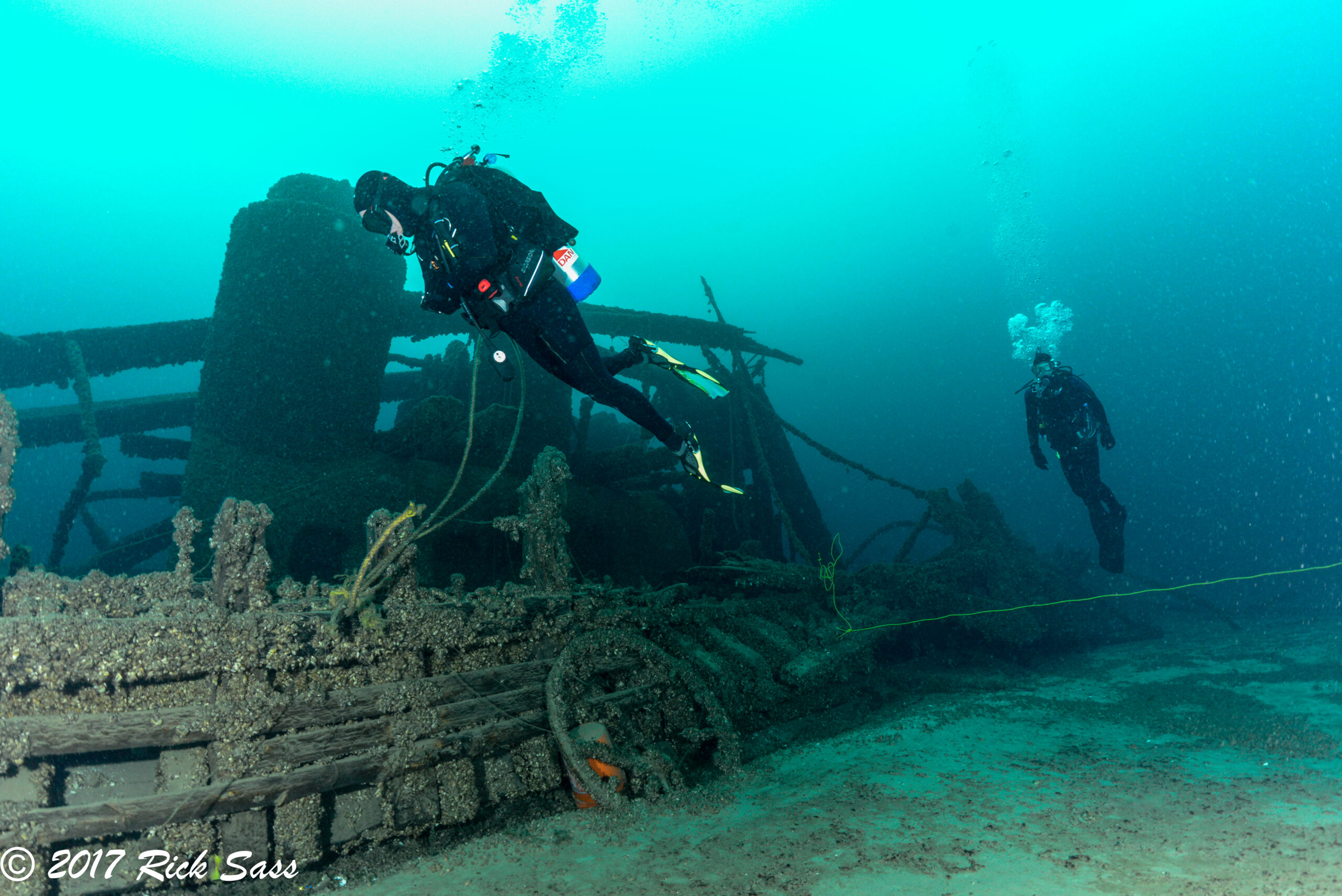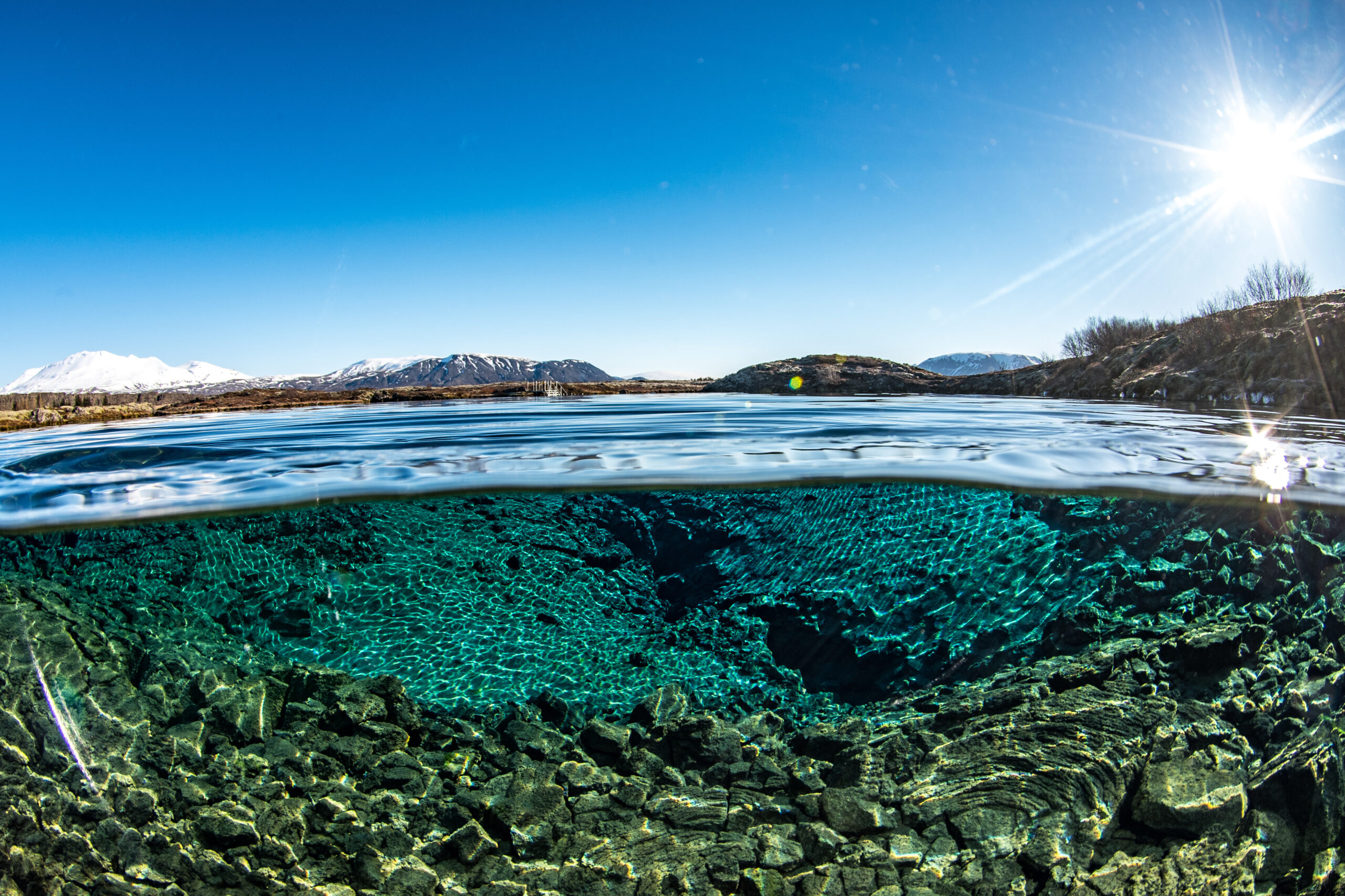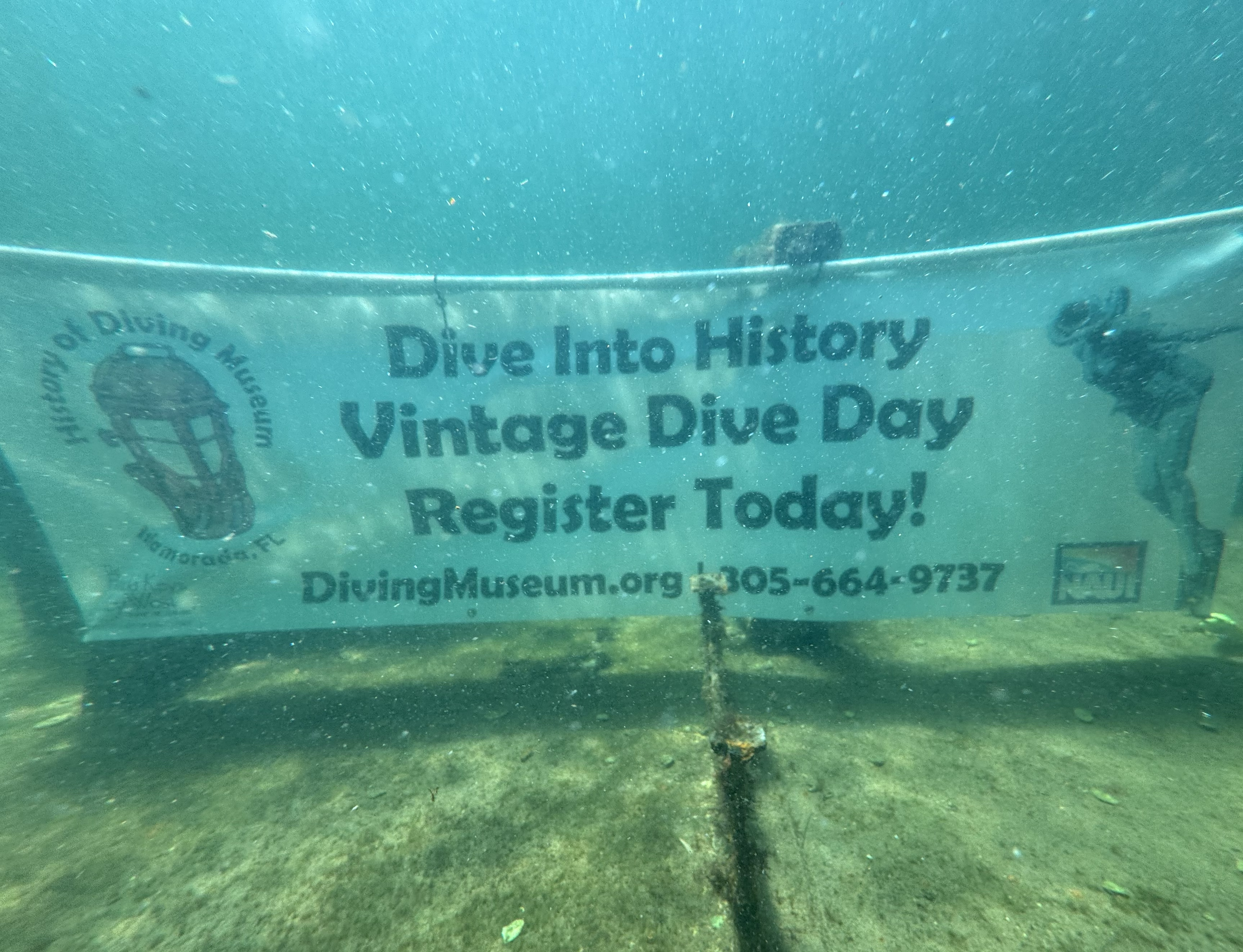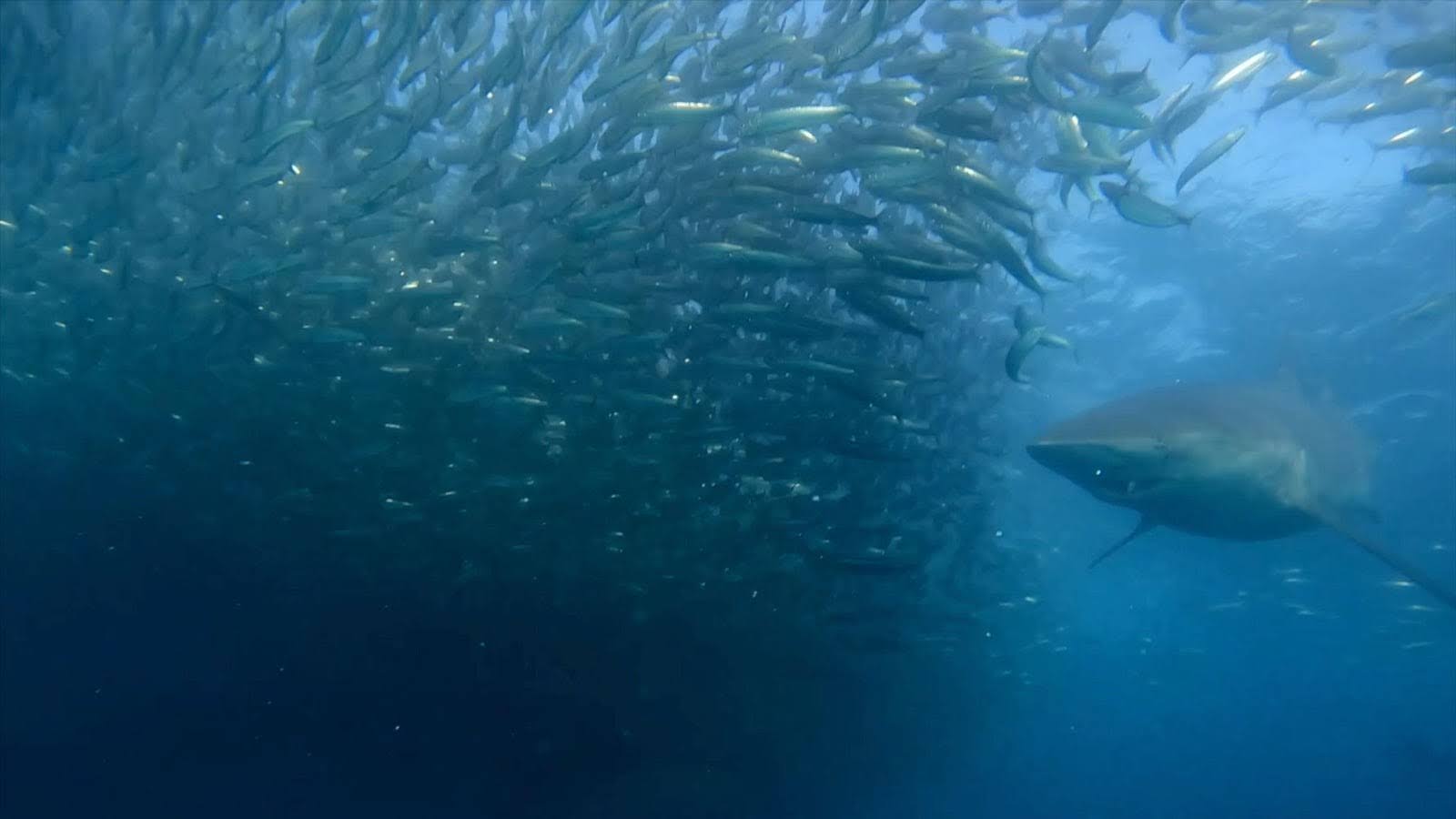A number of years ago, I visited Crystal River, Florida, in the hopes of photographing manatees. As it turned out, I was about a month early, and there weren’t too many manatees to be found at their favorite freshwater springs and hangouts. As we sat on our guide’s boat and lamented the lack of action, he told us about a river where we could encounter “60-meter (200-foot) visibility, bass and gar everywhere you look, a white sandy bottom, turtles, ducks and even an occasional gator.” “Where is this?” I asked. It sounded too good to be true. “Just a half-hour away, in Dunnellon,” he responded. “So what are we doing here?” I asked. “Let’s go.”
My dive buddy looked at me as if to say, “Are you serious?” I knew exactly what he was thinking: If I had a dollar for every dive site whose grandeur was overexaggerated, I’d be retired by now. But half an hour later, we were riding his pontoon boat up-river toward Rainbow River’s headspring, a spring that vents between 1.5-2.3 million cubic meters (400-600 million gallons) of the clearest 22 degrees Celsius (72 degrees Fahrenheit) water that we’d ever seen. The experience of motoring up the river was surreal. The water was so clear that it felt as if the boat floated on air. Every fish and sand ripple on the bottom was clearly visible from the surface without the need for a mask, and the experience just kept getting better.
The second we entered the water, I was blown away. Our guide’s description hadn’t done Rainbow River justice. The visibility was as good as promised, but the colors, abundance of wildlife and the uniqueness of the experience far exceeded anything I had dreamed possible. Schools of largemouth bass stared back at me through reed stems, ancient-looking gar patrolled the shadows of the riverbanks, an otter played along the riverbank, and all the while, tiny little rainbows danced along the white sandy bottom — created by the prism-like ripples on the surface of the water. From that moment on, I was a freshwater diving fan. Having been raised on saltwater diving, it had never dawned on me that freshwater diving could be so incredible. A whole new world of diving possibilities opened up to me that day.
As we climbed back aboard the boat, our guide remembered part of the briefing he forgot to mention earlier: “Oh yeah, I’d be careful swimming under those weed rafts at the side of the river if I were you.” “Why?” I asked, but I think I already knew the answer. “You don’t want to disturb a 3-meter (10-foot) gator that might be resting on top,” he answered nonchalantly. Despite the vision of what could happen if I did that, I was stoked to switch tanks and dive back in — I was hooked on freshwater diving.
Five Freshwater Destinations That Should Be Top On Your List
In the world of dive travel, it’s not often that you hear of people planning a long-haul trip to dive Lake Dark-and-Silty or the Oh-So-Murky River. Most freshwater dive sites are often utilized by local dive operations as a means of getting divers certified and keeping them active when not traveling. The conditions in many of these freshwater bodies are usually less than optimal, yet nearly everywhere you go, there exists at least a few “premium” freshwater dive sites — places where the visibility might be better, there’s a shipwreck to explore or some other point of interest. On occasion, you might even encounter a rare jewel of a freshwater dive that’s quite spectacular. Take, for example, the petrified forest in Clear Lake, Oregon, or the lost city of Shicheng in China, or the crystal-clear mountain lakes of Switzerland. Yet as spectacular as those sites might be, most people don’t plan a long trip just to visit a single dive site. Dive travel is usually planned around destinations that offer a wide range of dives and topside adventures to boot, but there are a number of freshwater destinations that qualify as true dive destinations. We’ve put together a list of five freshwater destinations you might want to plan a trip around.
- Central Florida’s spring-fed rivers, caverns, and caves
Crystal River, Florida. Photo Courtesy: Romina Viscarret The number of exceptional freshwater dives in Central Florida is too great to list here, as there are over 1,000 known springs in the state, making it not only the U.S. state with the most springs, but Florida alone has more springs than most countries. The combination of Florida’s porous limestone geology and consistent rainfall allows for a tremendous amount of freshwater flow beneath the ground. Where fissures and subsurface pressure dictate, that cool, clear water bubbles to the surface, forming entrances to extensive freshwater cave systems and filling crystal-clear rivers. Whether it’s cave/cavern sites like Devil’s Den, Blue Grotto, Ginnie Springs or Peacock Springs or spring-fed rivers like Rainbow River or the more well-known Crystal River — famous for its manatee concentrations, Central Florida’s abundance of freshwater sites is sure to keep everyone from hardcore cave divers to discerning underwater photographers and casual snorkelers engaged. It also offers a wide range of training environments and NAUI Dive Centers to support you if you plan to take a group of divers.
- Mexico’s Yucatán Peninsula
Ik-Kil Cenote near Chichen Itza in Mexico Similar in many ways to Florida’s geology, the Yucatán Peninsula is largely flat and built on porous limestone. The differences between the Yucatán and Florida are as follows: generally speaking, the flow rate of water in the Yucatán is far slower than that of Florida; the cave systems tend to be mostly shallower than in Florida; and there is a halocline in the Yucatán caves where the freshwater layer above does not mix with the saltwater below, forming a layer that looks like the surface while you’re underwater — a real sight to behold. In addition, the Yucatán caves have been above water for a good portion of their existence, causing these caves and caverns to be more widely decorated with stalactites and stalagmites as compared to their Florida counterparts. The cenotes, or sinkholes, are windows into this incredible subterranean world. Anyone from novice to expert will enjoy exploring the cenotes, but only divers with the appropriate training should venture into the cave system.
- The U.S. Great Lakes — An abundance of shipwrecks
Great Lakes. Photo Courtesy: Rick Sass Containing about 21 percent of the world’s surface freshwater (water not frozen on the poles or trapped underground), the Great Lakes is the second largest lake system in the world, but perhaps the richest when it comes to shipwrecks. There are over 6,000 known wrecks, and considering the size of these lakes, they’re well-distributed in geographic location as well as experience level needed to dive them safely. Among the many regions with concentrations of wrecks here, Tobermory stands out as one of the best freshwater diving destinations on Earth. About 300 kilometers (190 miles) northwest of Toronto, Tobermory sits at the northern tip of a peninsula that juts out into Lake Huron. There you’ll find the Five Fathoms National Marine Park, where wrecks from various periods sit at a variety of depths applicable to all experience levels. Learn more about Great Lakes wreck diving from our article in issue [Quarter 1, 2017] of Sources.
- Lake Baikal, Russia
The largest freshwater lake in the world, Lake Baikal’s volume of water is even bigger than that of all the Great Lakes combined. It contains a little more than 22 percent of the world’s surface freshwater. The lake stretches over 630 kilometers (nearly 400 miles) and is the deepest known lake in the world, with a maximum depth of 1,640 meters (5,380 feet) and an average depth of 745 meters (2,440 feet). While these numbers are impressive by any measure, what’s even more impressive is its alien species and landscapes. Within the lake, divers frequently find visibility near 30 meters (100 feet) and a rocky substrate that’s covered with alien green sponges and a wide range of species of both vertebrates and invertebrates, some of which are endemic to Baikal. One special highlight is the Baikal seals, or nerpas, which are one of only three known freshwater colonies of seals. How this seal population came to Lake Baikal, far from any ocean, is a bit of a mystery. In the winter, Baikal is known for ice diving under thick sheets of perfectly clear ice. Diving Baikal can be done from land-based operations or liveaboards. - Silfra Fissure, Iceland
Iceland. Photo courtesy; Anders Nyberg Also covered not long ago by Sources [Quarter 1, 2018], Silfra is a fissure in a glacier-fed lake that’s geographically unique. Sporting perhaps the best clarity out of this list of premium freshwater diving destinations, the water at Thingvellir National Park boasts 100-meter (330-foot) visibility. Water this clear doesn’t come easy. It takes over 80 years for the glacial meltwater to filter through the fine volcanic rock before it enters the lake. Located under the cold clear waters of the lake, this famous fissure measures only 10 meters (33 feet) wide. Divers and snorkelers can literally swim between the North American and Eurasian continental plates here. While it’s the most popular, Silfra isn’t the only spectacular freshwater dive in Iceland. Litlaa — a geothermal river, Kleifarvatn — an underwater hot spring, and Davíðsgjá — Silfra’s smaller sibling — are among some of the mind-blowing freshwater dive sites found only here.
So, the next time you’re planning a trip for yourself or a group trip for your clients who are looking for something out of the ordinary, think of some of the adventures you could have at any of these great destinations. And, there’s one more huge bonus to diving freshwater — a lot less gear cleaning afterward!
